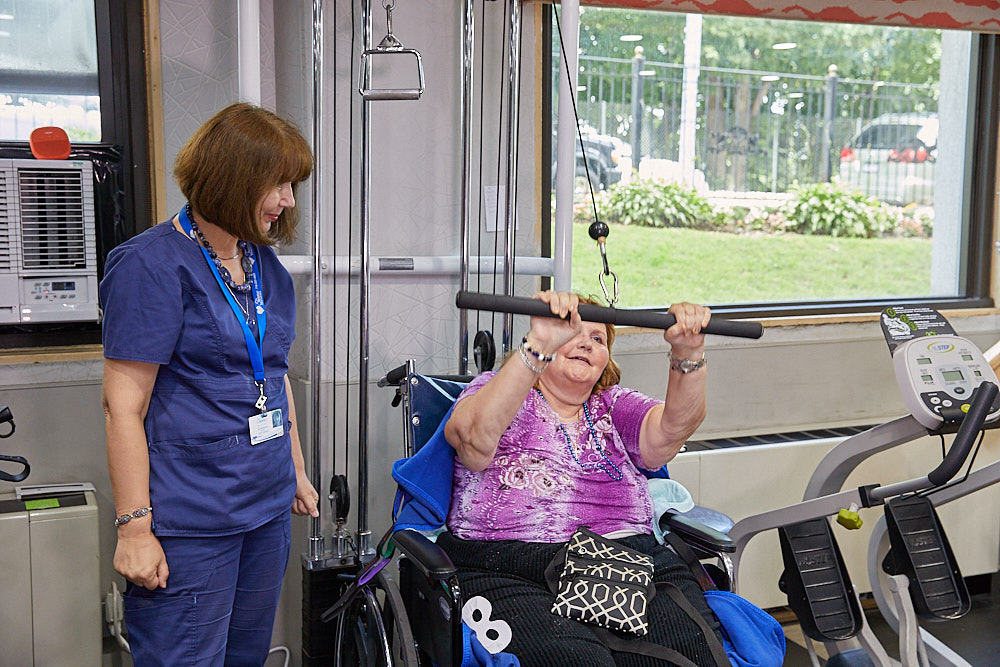Diabetes and Weak Muscles: Prevent Further Damage
Over time, diabetes may cause the muscles to weaken unless steps are taken to prevent such loss. Diabetes results from the body’s inability to produce or use insulin, affecting blood sugar levels. But insulin also has another vital job promoting cell reproduction and growth, including those in the muscles. Failure to maintain these functions due to diabetes contributes to weak muscles, often resulting in atrophy.
The good news is that there are ways to reverse the condition and prevent further complications. To reduce muscle deterioration from diabetes, your doctor may recommend rehab. You may require physical therapy or exercise to maintain muscle mass and strength.
Good diabetes care is important for managing the condition and tracking any needs, and goals you’ve set. Knowing what causes the issue is also crucial, which we’ll discuss in the following sections.

Diabetes and Weak Muscles
Diabetes can cause numerous changes to the body, including weakened muscles, and this occurs due to several factors. Nerve damage, or neuropathy, is one of the major problems for people with diabetes and nerves play a crucial role in muscle function.
Blood vessels are also getting damaged with diabetes, causing poor blood circulation. Chronic high blood sugar levels can lead to increased protein breakdown in muscles. The body may start breaking down muscle proteins for energy, especially if insulin is not effectively facilitating glucose uptake.
Though reduced insulin production in diabetes is the main cause of weak muscles, it is not the only problem. A few other factors contribute to the loss of muscle strength and mass and increased fatigue.
Reduced muscle strength may also occur in those with diabetes. As the condition progresses, you slowly lose the muscle’s former ability to function. In fact, a recent study shows a decrease in handgrip strength in those with Type 2 diabetes. If the muscles in the hand lose strength, it often means the rest are deteriorating as well.
Losing muscle mass is also common in those with diabetes, adding to your weak muscle issues. The compromised insulin production prevents the production of new muscle cells, so old ones aren’t replaced as quickly. Muscle size decreases the longer you’re dealing with diabetes.
Prevent further complications
A vicious circle occurs, and weak muscles and muscle loss can contribute to diabetes complications. If you have type 1 or type 2 diabetes, muscle reduction can further impact your health, suggests Chris McGlory, an assistant professor at the School of Kinesiology and Health Studies at Queen’s University, adding that It’s never too late to begin an exercise program.
Physical activity can be highly beneficial for people with diabetes and weak muscles, especially in strengthening those muscles that may have decreased due to the metabolic effects of the disease.
Well-developed muscles have a greater capacity to extract oxygen and nutrients from the bloodstream compared to weaker muscles. This means that any physical exertion you engage in will demand less effort from your heart and place less stress on it. In addition to benefiting cardiovascular health, strong muscles contribute to weight management and maintain sensitivity to insulin. Insulin sensitivity is crucial for regulating blood sugar levels, thereby aiding in the prevention or management of type 2 diabetes.
Obesity is a known risk factor for prediabetes and type 2 diabetes, causing insulin resistance and affecting cell production. Though overweight people have bigger muscles, atrophy is common, resulting from diabetic neuropathy. A sedentary lifestyle also affects your muscles since they aren’t getting the exercise they need to stay healthy and strong.
Experts also believe a vitamin D deficiency could contribute to reduced muscle strength and size in diabetics. Those living in northern climates or elderly people who spend too much time indoors often experience the issue. Lack of vitamin D causes skeletal muscle fibers to atrophy, leading to weakness and falls.
Signs and symptoms
People often experience a few symptoms of weak muscles with diabetes. One common sign is muscle fatigue, occurring after movement or exercise. The muscles tire out faster than before and take longer to regain their full strength. The issue worsens over time, making it more difficult to do the activities you used to do with ease.
Unfortunately, for those with diabetes, insulin production is compromised, reducing its ability to promote cell growth. High blood sugar levels and insulin resistance are primary factors that inhibit autophagy. Autophagy is a process where cells degrade and recycle their damaged or unnecessary components to maintain cellular health and function. This inhibition prevents the removal of damaged cell components and the generation of new cells, leading to a decrease in muscle mass and strength.
Resources:
- June 29, 2022, Diabetic Muscular Atrophy: Molecular Mechanisms and Promising Therapy https://www.frontiersin.org/journals/endocrinology/articles/10.3389/fendo.2022.917113/full
- August 17, 2020, The relationship between diabetes and muscle mass https://www.openaccessgovernment.org/muscle-mass-diabetes/92582/
- June 2018, Association between strength and type 2 diabetes mellitus in adults in Korea: Data from the Korea national health and nutrition examination survey https://pubmed.ncbi.nlm.nih.gov/29879054/
- April 6, 2010, Reduction of skeletal muscle, especially in lower limbs, in Japanese type 2 diabetic patients with insulin resistance and cardiovascular risk factors https://pubmed.ncbi.nlm.nih.gov/19900156/
- National Library of Medicine, Angela Shin-Yu Lien, Jawl-Shan Hwang, and Yi-Der Jiang, Nov. 7, 2017, Diabetes related fatigue sarcopenia, frailty https://www.ncbi.nlm.nih.gov/pmc/articles/PMC5754541/#jdi12752-bib-0003
- Jan 6, 2016, Reduced lower-limb muscle strength and volume in patients with type 2 diabetes in relation to neuropathy, intramuscular fat, and vitamin D levels
- Sep 40, 2020, Diabetes Canada, Barb Gormley, Move Your Body https://www.diabetes.ca/about-diabetes/stories/move-your-body!#:~:text=Studies%20show%20that%20resistance%20exercise,also%20improve%20blood%20sugar%20levels.
- Building Muscle with Diabetes, 15 January 2019, Updated 29 October 2023, Author Kate Hardy https://www.diabetes.co.uk/building-muscle-with-diabetes.html
This article contains informational and educational materials and does not replace health or medical advice. For questions or concerns regarding your medical condition or health objectives, speak to a qualified physician or healthcare provider.






Leave A Comment